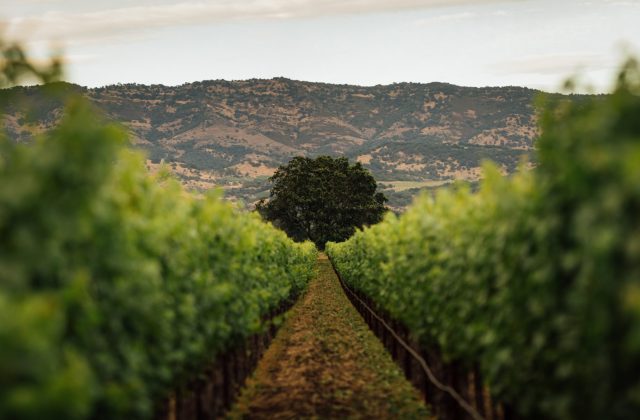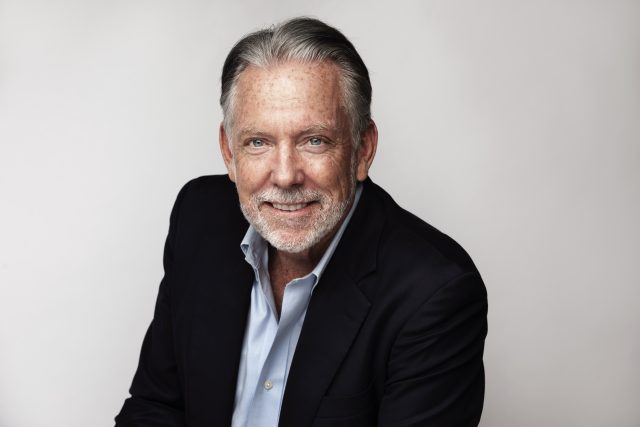This website uses cookies so that we can provide you with the best user experience possible. Cookie information is stored in your browser and performs functions such as recognising you when you return to our website and helping our team to understand which sections of the website you find most interesting and useful.
How do you make a great Napa Valley wine?
At a recent London tasting of Joseph Phelps Vineyards’ Insignia range, new executive chairman and Napa Valley veteran David Pearson shared what he believes are some of the key viticultural and winemaking decisions that can make all the difference.

Pearson joined Joseph Phelps Vineyards, part of LVMH’s portfolio, as executive chairman this summer, having previously been CEO at Napa icon Opus One from 2004 to 2020 and subsequently having worked with Meadowood. He mentioned that he knew Joseph Phelps Vineyards as “competitors” earlier in his career, but shared that even he was surprised by some aspects of the business: “I did not realise that Joseph Phelps Vineyards had acquired top vineyards in each of the top sub-appellations of Napa.”
He did disclose that, being fairly new to the role, he was not able to “rattle them off” just yet.
Drawing a comparison with Bordeaux, he suggested that this range of vineyards gave an “amazing range” of fruit to blend. In the case of Joseph Phelps Vineyards’ flagship wine Insignia, the blend composition is always Cabernet Sauvignon-led (of the vintages tasted, the 2010 had the lowest proportion at 84%, while the 2019 had the most at 93%). The remainder is made up of Petit Verdot, Malbec and, on occasion, Merlot and Cabernet Franc.
While these wines have the ingredients to be big, bold and a bit much, Pearson suggested that picking row by row, once the fruit of each vine is perfectly ripe, can help to create wines with “sweet, rich tannins” rather than “chewy” ones.
“Insignia is like a puzzle when you’re putting the different plots together,” he explained. “There are some plots that are really good, but they don’t fit the puzzle.”

For the 2019, the most recent release of Insignia, fruit from El Venedito vineyard in Oak Knoll made its debut in the blend, constituting about 2% of the final product. In total, seven vineyards provide grapes for Insignia, with the location of plots ranging from St. Helena in the west of Napa to Stags Leap further east.
A seminal moment for the region’s fine wines, according to Pearson, was a surge in cases of phylloxera across Napa in the 1990s when the AxR rootstock failed: “It allowed the valley to replant and rethink” in terms of grape varieties and planting density.
However, before any fruit can be picked to make wine, there is also the issue of to green harvest or not to green harvest. Pearson explained a decade ago it was common practice to cut around 20% of the unripe grapes from the vine in order to ensure ripeness when it came time to harvest proper, with Opus One and Joseph Phelps Vineyards being two notable exceptions that did not do this. A “big heat spike” in 2010 vindicated the decision not to green harvest, a viticultural choice that Pearson argued “saved the vintage” for both.
As global warming makes growing seasons hotter and hotter, fewer and fewer Napa Valley producers are green harvesting. Upon tasting the 2010 Insignia, Pearson remarked: “Challenging vintages are like challenging children – you love them most!”
In the cellar, there has also been a stylistic shift. While 100% new French oak is utilised, the period of maturation has been dialled down, with Insignia spending a maximum of 24 months in barrel (as was the case with the 2019, the most recent vintage of Insignia released).
“Oak is like putting salt on a dish,” Pearson opined. “If you can taste the salt, you’ve put too much.”
When it comes to when to enjoy the wines, though the vertical tasting stretched back to 2001, Pearson suggested that youth, even in a fine wine that can age for a prolonged period of time, has great merits: “We encourage people to think of young wines as something pleasant and enjoyable.”
These wines do fetch a high price of course, with the 2019 retailing in the UK for £275 (the 2010 has an RRP of £492), but Joseph Phelps Vineyards does produce a second wine, Napa Valley Cabernet Sauvignon, where the puzzle pieces that do not fit into Insignia can go. Though by no means an entry level wine (the 2021 vintage retails in the UK for £85), comparatively the Cabernet Sauvignon is more accessible than the “monolith” of Insignia, as Pearson put it: “Cult wines are fun, sexy, cool – but they’re like shooting stars: they burn really bright and then they go away.”
Future plans
Speaking about last year’s acquisition of Joseph Phelps Vineyards by LVMH, Elizabeth Phelps Neuman, the granddaughter of Joseph Phelps, said: “I could not think of a better partner to carry the family legacy on, continue what we have started, and make long-term decisions than Moët Hennessy.”
Considering the “authenticity” and legacy that Joseph Phelps Vineyards has acquired over the last four decades, Pearson quoted the Rothschilds’ famous line: “Making a great wine is easy, it’s just the first 100 years that are difficult.”
However, Pearson does not think that Joseph Phelps Vineyards is in the “end zone”, believing that there are opportunities for “renewal” and “regeneration”. One such opportunity is the chance to replant some of its vines, both for the sake of plant health and in order to “optimise” which varieties are planted where.
Pearson teased some of the long-term decisions that are being considered at Joseph Phelps Vineyards, including enhancing its tourist offering, particularly at the ranch that Joseph Phelps himself built in 1973, and the possibility of regenerative farming.
Related news:

